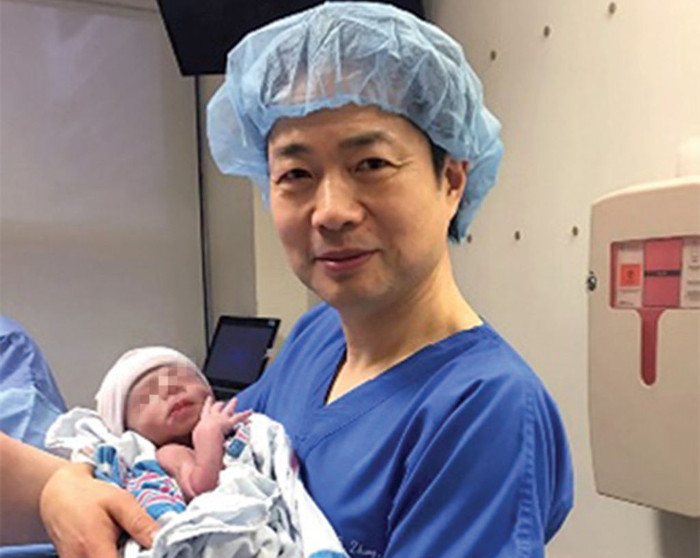The first baby in the world was born from a mother and father
A 5-month-old boy in the US became the first baby in the world to be born with a new technique of combining DNA from three people.
Three-child birth techniques developed by Dr. John Zhang of the New Hope Reproductive Center in the US allow parents to carry a rare genetic mutation with healthy children, New Scientist yesterday. The first baby applied this technique was born in April and is in good health.
The mother of the boy carries Leigh's syndrome, a disease that affects the developing nervous system, leading to death. The disease-carrying gene is located in mitochondrial DNA, a very small structure that supplies energy to cells and passes from mother to child.
Ten years after marriage, the woman was pregnant but her two children died at an early age due to Leigh's syndrome. Tests show that although the mother is very healthy, her mitochondrial 1/4 carries the gene with Leigh's syndrome.

Dr. Zhang holds the boy.(Photo: New Scientist).
The new technique is controversial among medical experts and has only been approved in the UK. In the UK, the technique with pronuclear transfer (PT) requires fertilization doctors to use the father's sperm to fertilize both the mother's egg and the donor's egg. Before the fertilized egg divides into an early embryo, the doctor removes the donor's egg and replaces it with the mother's egg.
However, this technique cannot be applied to Muslims by destroying two embryos that are opposed. Therefore, Dr. Zhang approached other ways called spindle nuclear transfer (SNT) . He took the egg from the mother's egg and implanted it in the donated egg of the donor. Eggs contain motherly DNA and mitochondrial DNA from donors who are then fertilized by the father's sperm.
Zhang's team used the technique to create 5 embryos, but only one embryo developed normally. Embryos are implanted in the mother and boy body born 9 months later. Researchers will introduce new techniques at the scientific conference of the American Reproductive Medicine Association in Salt Lake City, Utah in October.
Both PT and SNT techniques have not been adopted in the US, so Dr. Zhang must take steps in Mexico. The team considered ethical issues when developing technology, according to Sian Harding, who evaluates the ethics of applied engineering in the UK. They avoid embryonic destruction and use baby embryos to give birth to babies that do not inherit mitochondrial DNA for the next generation.
When Zhang and his colleagues examined the baby's mitochondria, they found that the rate of mutation was less than 1% and hopefully this result did not cause any health problems. Usually, children get sick when the rate of mitochondria contains mutations at 18%.
- Fluttering mother buffalo born 2 children
- The first baby was born from the donation of the dead
- Learn the origin and meaning of Father's Day 2018
- America welcomes the first baby born from a mother who has a uterine transplant
- Obese mother, baby easy heart defects
- The first baby was born in test tubes - that day, now
- The child is born unknown or boy
- The baby was born from the sperm of a father who died 48 hours
- Mother of the giant rhino launched in America
- The smallest baby in the world miraculously survives even though it is about the size of an ... apple
- Discovering fossil 'mother and baby' 4,800 years in Taiwan
- The miracle of raising children with father's milk
 Green tea cleans teeth better than mouthwash?
Green tea cleans teeth better than mouthwash? Death kiss: This is why you should not let anyone kiss your baby's lips
Death kiss: This is why you should not let anyone kiss your baby's lips What is salmonellosis?
What is salmonellosis? Caution should be exercised when using aloe vera through eating and drinking
Caution should be exercised when using aloe vera through eating and drinking